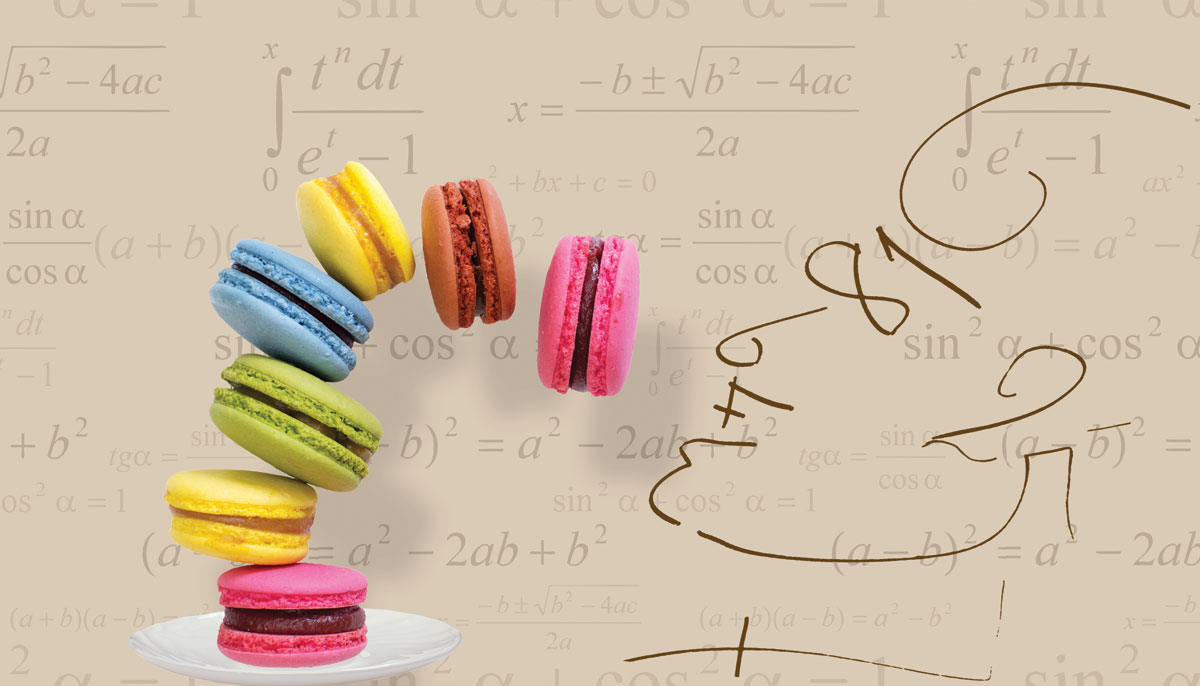CULINARY APPROACH TO MATH
Cooking can be an answer to simplifying mathematics, says a new book which tries to whet the appetite of math whizzes and arithmophobes alike with recipes and puzzles. From simple numeracy to category theory (‘the mathematics of mathematics’), math crusader Eugenia Cheng prescribes easy recipes for understanding complex arithmetic in her book “Cake, Custard and Category Theory.” A PTI feature.
Calling on a baker’s dozen of entertaining, puzzling examples and mathematically illuminating culinary analogies – including chocolate brownies, iterated Battenberg cakes, sandwiches, Yorkshire puddings and Mobius bagels – Cheng tells readers why everyone should love math.
So what on earth does a recipe have to do with math?
“You might think that rice cookers are for cooking rice.
This is true, but this same piece of equipment can be used for other things as well: making clotted cream, cooking vegetables, steaming a chicken. Likewise, math is about numbers, but it’s about many things as well — getting the right answer, putting ideas together and so on,” she says in the book, published by Hachette India.
According to Cheng, a senior lecturer in Pure Mathematics at the University of Sheffield, many people are either afraid of math, or baffled by it, or both.
“Or they were completely turned off it by their lessons at school. I understand this — I was completely turned off sport by my lessons at school, and have never really recovered. I was so bad at sport at school, my teachers were incredulous that anybody so bad at sport could exist. And yet I’m quite fit now, and I have even run the New York marathon,” she writes.
She says ‘category theory’ which can be thought of as the ‘mathematics of mathematics’ is about relationships, contexts, processes, principles, structures, cakes and custard.
“Yes, even custard. Because mathematics is about drawing analogies — including custard, cake, pie, pastry, doughnuts, bagels, mayonnaise, yoghurt, lasagna and sushi.”
Math, according to Cheng, like recipes, has both ingredients and method.
“And just as a recipe would be a bit useless if it omitted the method, we can’t understand what math is unless we talk about the way it is done, not just the things it studies,” she says.
Citing examples of cottage, shepherd and fishermen pies, she says all these are more or less the same with the only difference being the filling that is sitting underneath the mashed potato topping. In all these cases, the recipe is not a full recipe but a blueprint and one can insert own choice of fruit or meat or fillings.
“This is also how math works. The idea of math is to look for similarities between things so that you only need one ‘recipe’ for many different situations. The key is that when you ignore some details, the situations become easier to understand, and you can fill in the variables later,” she writes.
Cheng is keen to bring mathematics to a wider audience and help reduce math phobia.
Good at explaining things in an accessible way to non-mathematicians of all ages, her first book was called “How to Bake Pi,” in which she provides an accessible introduction to the logic and beauty of mathematics, powered, unexpectedly, by insights from the kitchen.
At the heart of “How to Bake Pi” also was Cheng’s work on category theory.


